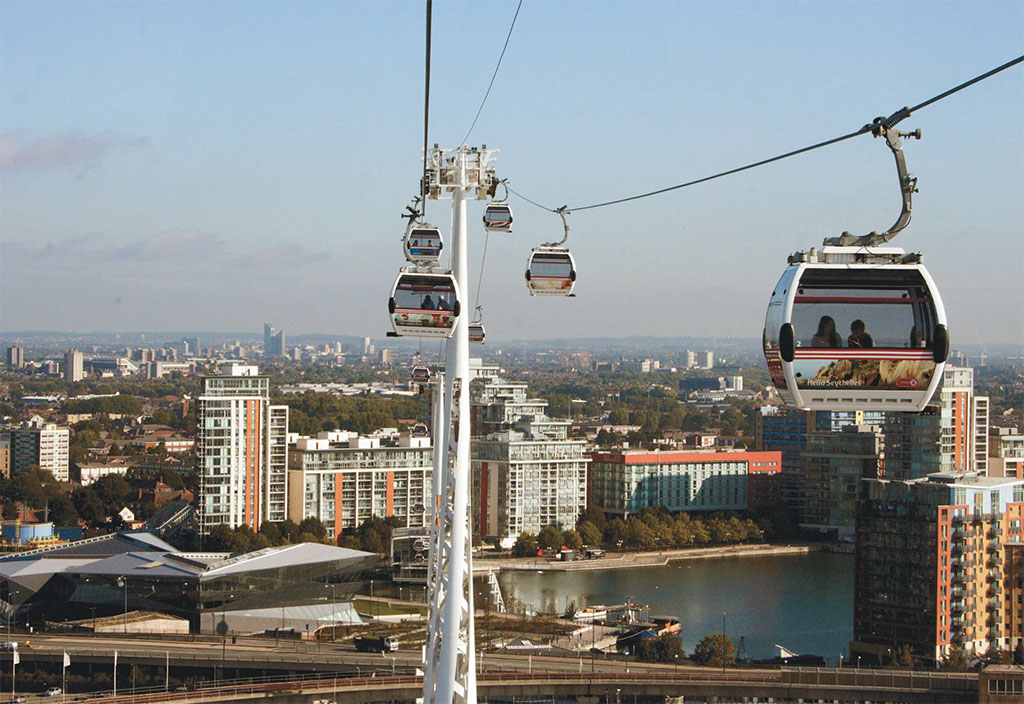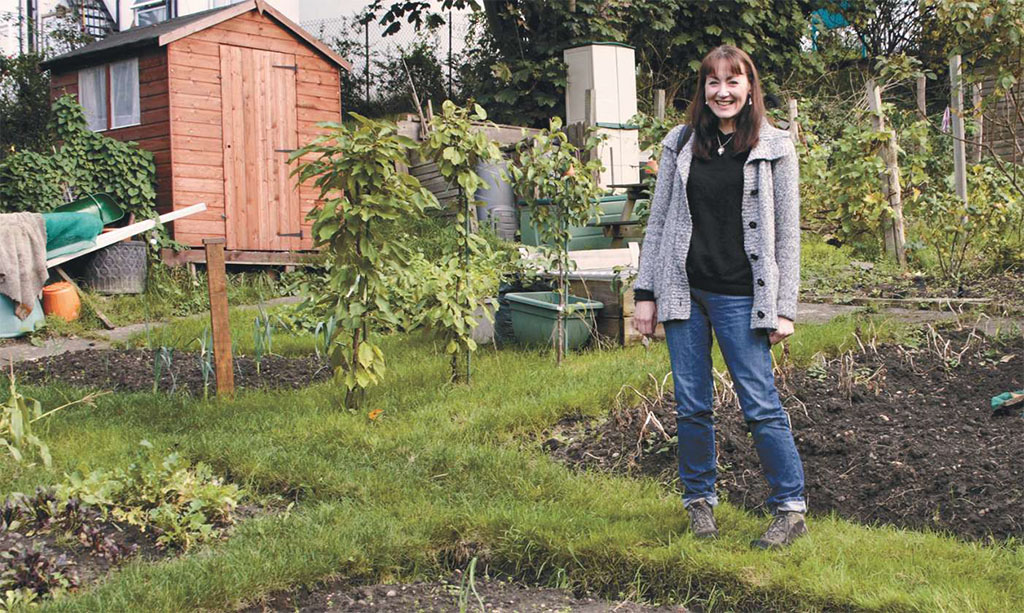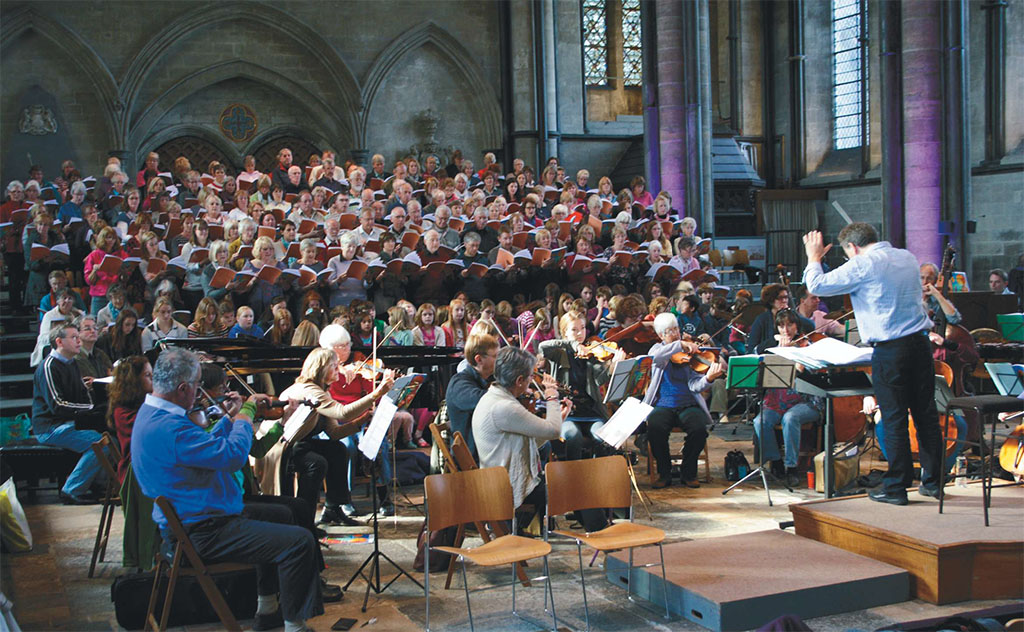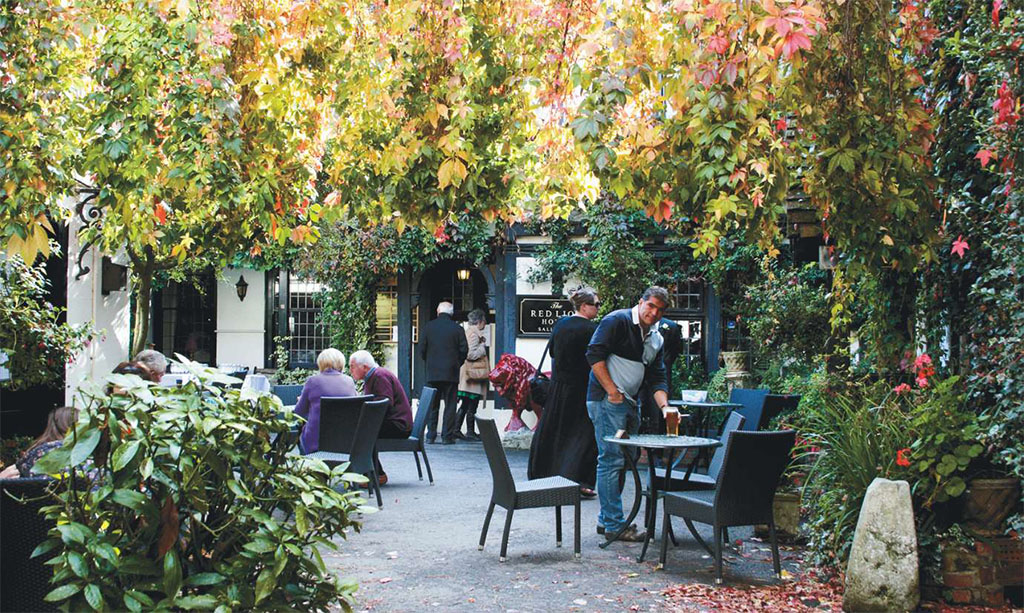
THERE IS NO PREAMBLE. An hour before leaving for Dulles to fly to London on my annual autumn editorial expedition around our sceptered isle, I discovered I had lost my driver’s license. No, it was really lost and not just carelessly mislaid, but that’s another story. With 10 to 12 days of stories and appointments, photos planned and rendezvous with British Heritage writers and old friends ahead, the one thing certain was that Avis was not going to give me that rental car without a drivers license. Such was the state of play as I boarded the British Airways overnight to Heathrow.
Ah, the unexpected adventure has long been a favorite of mine. By the time I had slipped into studying the moving map and a Bloody Mary, I was rather looking forward to this. There’s a challenge in the unexpected adventure. In 15 years as a small group tour operator in Britain, I took great pains to teach our couriers about Plan B. After all, the one thing certain about international travel is that something is going to go wrong—or at least not as planned. As a writer and editor, of course, I sensed good copy.
So, come on along, as I tried to keep a rather tight travel agenda one leg at a time using only public transportation. The experience was rewarding to expectation, and, after all, you, too, may find yourself in similar need of Plan B someday.
London Is Always a Treat
Fortunately, the first stop was London. Though I usually end rather than begin travel in London, Sandra Lawrence had been encouraging me to visit Greenwich again, and it was time to see this allotment garden she’s been so chuffed about the last couple of seasons. I’ll admit to being duly impressed, particularly with the view out over the London skyline. She and her fellow gardeners enjoyed a bountiful year with England’s glorious summer, especially compared to last year’s rain-filled growing seasons.
It was great, too, to see the restored Cutty Sark back in pride-of-place on Greenwich Pier. We did a short bus ride over to the O2 as well. The massive arena is even larger inside than out, with a veritable mall of shops, eateries and entertainment venues ringing the concourse of the main arena under the big top. I was delighted to get a trans-Thames crossing on the new Emirates cable cars from North Greenwich.
The next day we took the Thames Clipper upriver to Embankment on a mission. I wanted to pick up a Hard Rock Café T-shirt for an old buddy of mine. And it’s always fun to show Sandra something in London that she’s not familiar with. We hoofed up to Piccadilly and zigzagged through Mayfair to the Hard Rock near Hyde Park Corner. Then, we got a bite of lunch in Shepherds Market and caught a bus up Shaftesbury Avenue to the British Museum.
The afternoon waned across the street from the British Museum at Tea & Tattle. All right, that was the real mission of the day. Sandra featured the unobtrusive tea shop in her column a year or so ago. Several British Heritage readers have written to say they have visited and share their praise. Of course, regular readers know Sandra is a serious tea aficionado, so I wanted to see for myself.
Tea & Tattle really is a treat. Below the street in the Arthur Probsthain Oriental Bookseller, the same family that has owned the specialist bookstore for 110 years runs the tearoom. The friendly, bright café occupies rooms once needed for storing inventory. It is a classic tearoom menu with the advantage of being a la carte. It’s possible to have a snack and a cuppa without making a huge meal of the experience. Chris Ma, the family member-in-charge, was delighted to make our acquaintance and quick to mention visits by British Heritage readers.
Apart from being a great place to get off your feet and revive after visiting the British Museum, and a charming, low-key afternoon tea destination, Tea & Tattle would make an easy-to-find rendezvous point anytime you are splitting up during visits to town. And you might run into other British Heritage readers—or Sandra and her friends.
[caption id="AllAboardtheUnexpectedAdventure_img2" align="aligncenter" width="1024"]

DANA HUNTLEY
Off to Portsmouth
From a logistical standpoint, Portsmouth wasn’t a challenge. I was heading to the home of the Royal Navy to see the new Mary Rose museum at the Historic Dockyards. I came by train from Greenwich to London Bridge on my Oyster card, then took a cab to Victoria Station, where trains run every hour to Portsmouth Harbor.

As it happens, I had already made reservations at Keppel’s Head Hotel, about 200 yards across the forecourt of taxi lanes and bus stops from the train station. An old waterfront hotel, right on the Hard, about 100 yards from the front gates of the historic dockyard, the Keppel’s Head’s glory days were gone 30 years ago. The paint was dirty, the carpets often threadbare, bits of wallpaper were pealing at the edges and the harbor-view dining room of the once–grand place now served only breakfast. Best of all, the lift was one of those old-fashioned kinds with the accordion gate and the outer door you leveraged manually. It lumbered me up to a top–floor room under the eaves, facing the harbor. It was great!
From my window, I looked down on HMS Warrior, the Wightlink ferrys and the passing cargo ships and continental ferries to Normandy, Brittany and the Channel Islands. I got the Mary Rose story and more. Actually, I took a day longer than planned in Portsmouth and did the city, Southsea and revisited the Historic Dockyard ships and museums. Besides, the Ship Anson pub a few doors down was a friendly place with good pub food and beer.
I also did a fascinating harbor cruise around the commercial docks and naval quays of Portsmouth harbor. All experience proves that you learn something every day. I never knew that every three days a banana boat lands in Portsmouth bringing 80 percent of the bananas consumed in Britain. The cargo containers piled on deck hold some 49 million bananas. I do wonder where Britain stands in the banana–consumption league tables. But I had promises to keep, and my next move to figure out.
Smashing in Salisbury
From Portsmouth, the train lines run along the coast, east toward Brighton, west to Southampton, Bournemouth and Weymouth. My next intention was to visit the Isle of Purbeck (there’s a story there); that was the tough one without a car. I’d figured I could get a train to Wareham, and then pursue the story on the old steam train excursion line that runs down through Corfe Castle to Swanage. It would take me a day to get there, and rain was predicted for the following day. So, Purbeck got scrapped for a cross-country train running northwest toward Bristol. I jumped out at Salisbury.
I love the old medieval cathedral cities, and Salisbury is a beauty. I wrote about it last issue in our “Road Trip” to Wessex by rail. Little did I know then that I would end up largely replicating that itinerary. It was a great opportunity to update on the 13th-century town and on my photo archives. At Salisbury Cathedral, the local Salisbury Community Choir was rehearsing for their 21st-anniversary concert that evening. The strains of a gorgeous arrangement of “Morning Has Broken” echoed through the arching nave.
[caption id="AllAboardtheUnexpectedAdventure_img4" align="aligncenter" width="1024"]

It was great fun to return to the Red Lion Hotel on Milford Street. The funky old place with a vine-bathed courtyard may truly be the oldest purpose-built hotel in Britain or even the world, built as a hostelry for stonemasons working on the building of Salisbury Cathedral in 1230 and welcoming visitors ever since. That Saturday night the Red Lion had a decidedly more contemporary twist, with a wedding party and the weekend class reunion (I’d guess about the 15th) of a posh girls school taking place. I took my own place with a pint and my pipe in the courtyard and relished the people watching.
On to Bath
My Wessex train ride continued along the Bristol line to Bath. Once again, though it’s a town I know and love: it has been a few years and I was delighted to return there. I reflected then that 10 years ago I spent Christmas in Bath; it’s the only time I’ve ever seen its busy streets actually empty. Met by rain, I took a taxi up to the hotel from Bath Spa station, whereupon my rugged, lightweight suitcase, veteran of 15 years at least, gave up the ghost and its zipper as I wrestled it into the room.
Strange as it sounds, the quest for a suitcase replacement provided an operating motif for my two-night visit in Bath. Of course, I also visited the Assembly Rooms and the Fashion Museum. And I had been wanting to revisit No. #1 Royal Crescent, once the home of literary critic George Saintsbury, which is a museum of how affluent Georgian gentlemen lived in Bath’s 18th-century heyday. Oh, they lived lavishly enough, though the meals those folks got up to would shorten anyone’s lifespan. Eh, yes, and I found a pub on Northumberland Place for a pint and conversation, and an alarming pink bag at a luggage shop on the corner with Union Passage.
Always Welcome in Cymru
Pink bag in tow, I was back on the train and across the Severn Estuary into Wales. It’s the mainline service running west from London Paddington to Swansea via stops such as Reading, Bath, Bristol, Cardiff—and Newport.
Newport was always the plan. I had never explored the city center of Wales’ third-largest city, replete with its history as a major coal and steel port. Arriving by train did put me at something of a disadvantage, and from the station, I hauled that pink suitcase and my hardback briefcase on the day’s adventure. It was rather sad; Newport, that is.
The once–vibrant working-class city still has bustling streams of people on its central avenues and pedestrianized Commercial Street, but the vitality and the affluence are gone. The once-elegant Westgate Hotel has been long boarded up, many shop fronts are vacant and Marks & Spensers closed in January to move to the suburban shopping center. Sadly, there was nothing outstanding to note or photograph. But then, there was a reason why I had never been there before.
On my way back to the taxi rank at the station, I sidled into a pub for a restorative sandwich and pint. Getting into easy conversation with a couple of good-humored regular gents reminded me of why I love Wales despite the fact that it’s not all pretty. Still, they were 10 years younger than I am and looked 10 years older. That’s a hard life. The taxi driver up to my preplanned hotel off the M4 was an affable chap as well.
That evening, my longtime friend Norman Jarrett came down from the valleys to visit over a few pints and a chop. Norman was many years secretary of the Aber Valley Male Voice Choir, and we’ve had a connection since 1996. The choir is located in the village of Senghenydd, above Caerphilly, where the greatest colliery disaster in British history took place in 1913. I wrote a British Heritage feature on the tragedy in which 439 men lost their lives in the mine explosion (September, 2010). The day before had been the 100th anniversary of the Senghenydd disaster, marked by commemorations covered by the British media. I had intended to be in Senghenydd for events, but you don’t get there by train.
Norman and I had our usual jovial visit, and his daughter Samantha came down later to retrieve him. Samantha teaches Welsh in the secondary school in Senghenydd. A part of the school’s commemoration included placing a sign bearing the name of a miner who died on each of 439 students. They then did a school walkout, on to the playing fields—so that students, community and visitors could dramatically visualize how many 439 lost lives would have been in a village of fewer than 5,000.
The next day, regular British Heritage feature writer Siân Ellis came down to rescue me. We had planned a lunch rendezvous, but she willingly turned chauffeur and we went a few miles up to Caerleon for the story I was after. That’s all about the Roman legion based there for 200 years and the King Arthur legends and such, and will be forthcoming. It was a full day, including the pub lunch and some strategizing about British Heritage and the state of the world.

All’s Well That Ends Well
With a taxi to Newport Station, it was easy to catch the next train east toward London. Rather than riding all the way, however, I changed trains at Reading for a local to Slough. I was met by old friends for a visit down memory lane and a meal and then delivered to Heathrow for a last night in an airport hotel. But then, my voyages rarely end with a grand hurrah these days.
The Unexpected Adventure was a delightful success, though it did involve some flexibility. The British rail network does not get you everywhere, but it can often get you close. By the end of the trip, though, hauling my kit behind me, throwing it in and out of trains and luggage racks and over rail bridges began to take its toll. It was a lot easier 20 years ago.
The one toll I was particularly interested in, however, remained to be totaled up. How much did this short-notice Plan B agenda actually cost compared to what I would have paid to do the same thing with rental car, petrol and Britain’s horrific parking charges everywhere? The short answer is that the train-taxi alternative was less expensive by probably $300. Of course, that was a single traveler; for two or more, the economies would change dramatically.
Many other adventures had I, naturally. As for those, however, to paraphrase Dickens’ great opening line, these British Heritage pages must show.





Comments